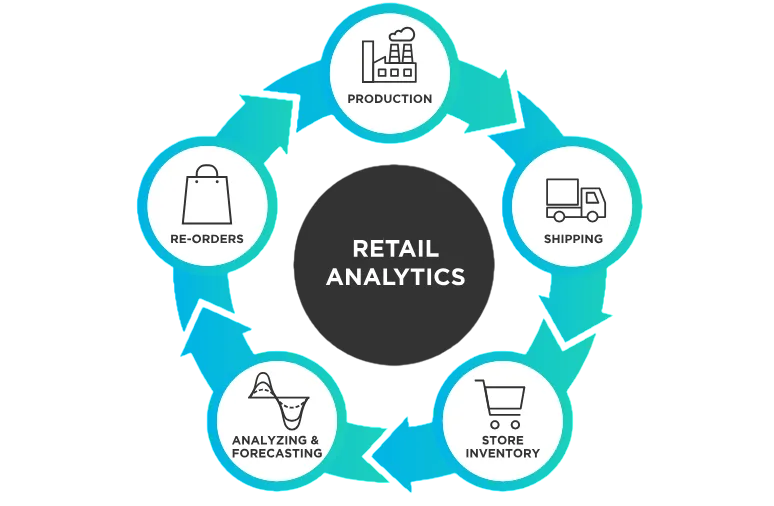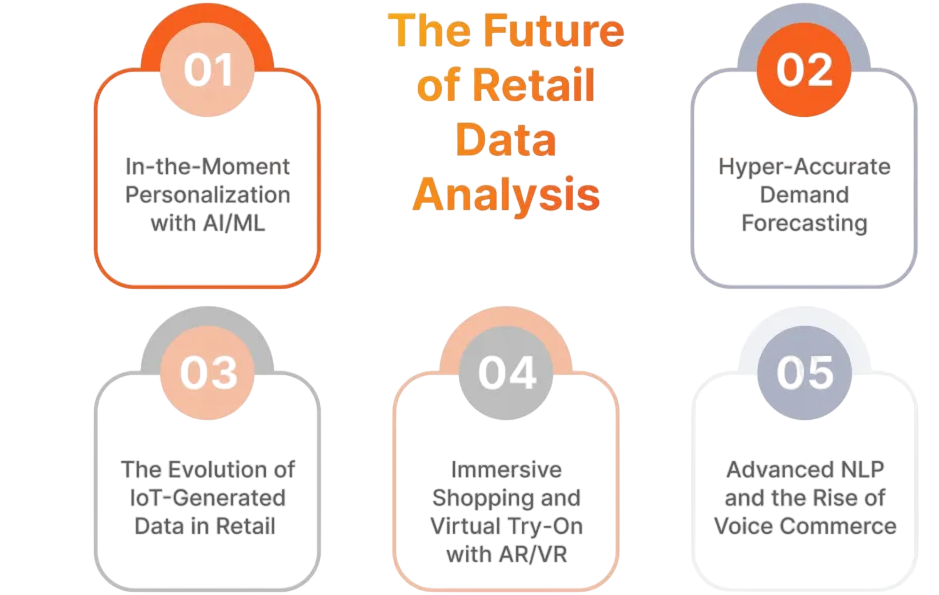
- Introduction
- Early 2000s: The Rise of Retail Data
- 2005–2006: Birth of Hadoop and the Shift Toward Big Data
- 2008–2010: Hadoop’s First Use Cases in Retail
- 2011–2013: Hadoop Matures Retailers Embrace Analytics
- 2014–2016: Personalization and Customer-Centric Strategies
- 2017–2019: Real-Time Processing and Omnichannel Innovation
- 2020–2021: Pandemic Disruptions and Hadoop’s Critical Role
- 2022–Present: Hadoop in the Age of AI and Cloud Retail
- Conclusion
Introduction
Hadoop in Retail Services has revolutionized how the retail industry operates over the past two decades. The sector has evolved from physical stores with minimal online presence to data-driven e-commerce ecosystems, where data sits at the heart of every strategy. Among the various technologies enabling this transformation, Apache Hadoop stands out as a key player. With its ability to manage massive volumes of data quickly and cost-effectively, Hadoop in Retail Services has become essential for retailers aiming to drive growth, enhance personalization, and boost operational efficiency. To build the skills needed to harness these technologies, explore Data Science Training a hands-on pathway to mastering data engineering, predictive analytics, and scalable decision-making frameworks. This blog explores the journey and influence of Hadoop in Retail Services, tracing its evolution from foundational big data processing to its integration with advanced technologies like AI, machine learning, and real-time analytics.
Early 2000s: The Rise of Retail Data
In the early 2000s, retailers faced a challenge they were not fully ready for: a surge in customer and transactional data. Loyalty programs, barcode scanning, email marketing, and early web platforms all added to a growing pile of structured and semi-structured data. Traditional relational databases, while helpful, had a hard time scaling and integrating this information effectively.

To overcome these limitations, professionals now rely on distributed systems and specialized competencies. Visit Hadoop Skills for Success a practical guide that outlines the technical and strategic abilities needed to thrive in Big Data environments, from HDFS management to advanced analytics. This flood of data set the stage for the use of more scalable and distributed systems. Retailers realized they needed something stronger to store, process, and analyze consumer behavior on a large scale.
Interested in Obtaining Your Data Science Certificate? View The Data Science Online Training Offered By ACTE Right Now!
2005–2006: Birth of Hadoop and the Shift Toward Big Data
- The release of Apache Hadoop in 2006 marked a watershed moment in the evolution of data processing. Inspired by Google’s MapReduce and Google File System, Hadoop introduced a cost-effective, scalable, distributed computing framework. At this point, it was still largely an experimental platform used by engineers and data scientists at companies like Yahoo. To understand how this legacy compares with newer, in-memory engines, visit Hadoop vs Spark a comparative guide that explores architectural differences, performance benchmarks, and use case suitability across modern data ecosystems.
- Retailers began to take note. The ability to store terabytes and later petabytes of data without the need for expensive enterprise databases held enormous appeal. Though still in its infancy, Hadoop signaled a paradigm shift toward unstructured data handling and open-source analytics.
- E-commerce platforms using Hadoop to track user interactions across the website
- Retail chains mining historical purchase data to optimize inventory planning
- Email marketing teams analyzing open rates, engagement scores, and A/B test results using distributed Hadoop clusters
- Real-time fraud detection in online transactions
- Live inventory tracking and predictive replenishment
- Instant response chatbots and personalized search engines
- Clickstream analytics for UX optimization
- AI-driven inventory automation and logistics optimization
- Sentiment analysis on product reviews and social chatter
- Visual search and voice-based shopping assistants
- Next-generation predictive modeling for returns, customer lifetime value, and churn
To Explore Data Science in Depth, Check Out Our Comprehensive Data Science Online Training To Gain Insights From Our Experts!
2008–2010: Hadoop’s First Use Cases in Retail
By 2008, early adopters in retail started piloting Hadoop for specific use cases. These included batch processing of clickstream data, analysis of loyalty program trends, and centralized logging for IT performance. To explore how mastering these applications can shape your professional journey, visit Successful Career in Big Data Hadoop a practical guide that outlines the essential skills, tools, and strategies needed to thrive in the evolving data landscape.
Some pioneering examples include:
Hadoop enabled these organizations to handle data volumes that were previously impossible or prohibitively expensive to manage.
2011–2013: Hadoop Matures – Retailers Embrace Analytics
The period from 2011 to 2013 saw Hadoop quickly change from a new technology to an essential part of retail IT infrastructure. This transformation reshaped the world of data analytics. The release of user-friendly interfaces like Hive, Pig, and HBase played a key role in this progress. They made data more accessible. These tools allowed business users and analysts, who once struggled with complex coding, to work with intricate data systems using simpler querying methods. Retail companies quickly embraced Hadoop as a powerful organizational platform. To build the expertise needed to thrive in this evolving landscape, explore Data Science Training a practical gateway to mastering data manipulation, predictive modeling, and scalable analytics for real-world impact. They integrated it with their large data stores to gain valuable insights across different areas of operation.
Gain Your Master’s Certification in Data Science Training by Enrolling in Our Data Science Master Program Training Course Now!
2014–2016: Personalization and Customer-Centric Strategies
Beginning in the mid-2010s, the retail industry changed significantly. It moved from impersonal transactions to creating personalized, engaging shopping environments, thanks to Hadoop’s data analytics. Major retailers like Walmart, Target, and Best Buy invested heavily in big data technology to improve customer engagement. With machine learning, they created precise recommendation engines for tailored suggestions. To understand the broader ecosystem that powers these innovations, visit Big Data Hadoop Universe a comprehensive article that explores the tools, frameworks, and architectural components driving large-scale data solutions across industries. They also used dynamic pricing that adjusted to market conditions in real time and took advantage of mobile location data for targeted promotions. This change allowed retailers to combine their physical and digital operations into one smooth experience. It transformed traditional shopping into an individualized, data-driven journey that greatly increased customer loyalty and satisfaction.
Are You Preparing for Data Science Jobs? Check Out ACTE’s Data Science Interview Questions and Answers to Boost Your Preparation!
2017–2019: Real-Time Processing and Omnichannel Innovation
By now, customers expected real-time responses and omnichannel innovation across web, mobile, in-store, and social media channels. Hadoop had to evolve. With the integration of Apache Spark, Kafka, and Storm, Hadoop clusters gained real-time and in-memory processing capabilities. To explore how Java developers can transition into this dynamic ecosystem, visit Switching Career from Java to Hadoop a strategic guide that outlines the skills, mindset, and tools needed to thrive in Big Data roles.
This period saw Hadoop contributing to:
Omnichannel strategies reached full maturity, and Hadoop stood as the backbone, processing data from every customer touchpoint to inform unified, real-time decision-making.
2020–2021: Pandemic Disruptions and Hadoop’s Critical Role
The global pandemic caused major disruptions for retailers, forcing them to quickly adjust to a new commercial reality. While online shopping grew sharply, supply chains struggled under the strain, fundamentally changing how consumers shop. Hadoop became a key solution in this challenging environment, providing retailers with exceptional flexibility. With its ability to process data in real time, businesses could manage their supply chains, track inventory, and identify new consumer priorities in areas like home fitness and remote work supplies. To simplify the monitoring and management of these complex Hadoop clusters, visit Apache Ambari for Hadoop a practical guide that explains how Ambari streamlines administration, improves visibility, and enhances operational control across distributed environments. This information also enabled swift changes to marketing campaigns and improved the handling of online returns and refunds. By transforming raw data into valuable insights with Hadoop, retailers could navigate significant market fluctuations, ensuring strong operations and a quick response to the new landscape.
2022–Present: Hadoop in the Age of AI and Cloud Retail
Today, Hadoop continues to evolve as it integrates with cloud platforms and AI-driven technologies. With services like AWS EMR, Azure HDInsight, and Google Cloud Dataproc, Hadoop has become more scalable and elastic than ever. Retailers now rely on hybrid architectures, where Hadoop is part of a broader cloud-native data ecosystem. To understand how modern engines compare with legacy batch frameworks, visit Spark vs MapReduce a comparative article that breaks down performance, scalability, and use case differences between these two data processing paradigms.

Recent trends show Hadoop supporting:
As retailers embrace cloud computing, Hadoop remains a vital part of their data backbone, often integrated seamlessly into modern architectures with Kubernetes, Presto, and AI platforms.
Conclusion
Hadoop in Retail Services has evolved from its humble beginnings in batch analytics to becoming a real-time decision engine that drives modern commerce. It has democratized Big Data, empowered predictive modeling, and enabled the personalized, omnichannel experiences that customers now take for granted. Even as new technologies emerge, the principles behind Hadoop in Retail Services distributed processing, scalability, and open-source flexibility remain foundational. To build expertise aligned with these principles, explore Data Science Training a career-focused program designed to equip professionals with the skills needed for advanced analytics, machine learning, and data-driven decision-making. In many ways, Hadoop helped retailers transition from product-driven organizations to customer-obsessed, data-centric enterprises. As the industry embraces AI, IoT, and immersive shopping, one thing is certain: Hadoop in Retail Services continues to shape the future of digital retail, embedded deep within the very code of modern commerce.


